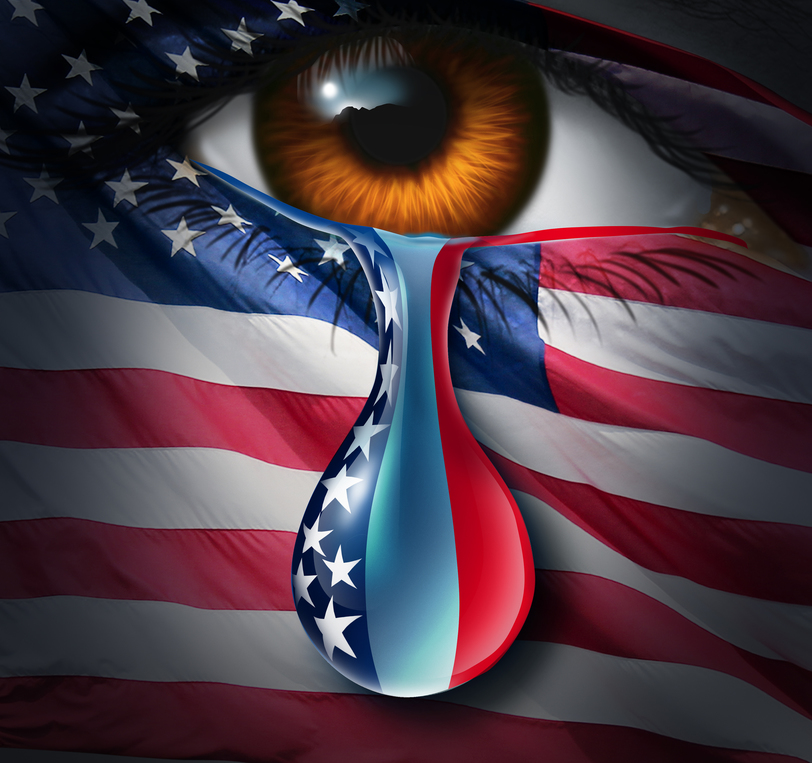The United States really is exceptional
We spend more money per capita on guns, and health care, than any other country on Earth. This represents a failure of public policy of the highest order and a threat to our democracy.
 Let’s look at the numbers. Americans own nearly half of the 650 million guns in civilian hands worldwide – over 300 million firearms. And we use them. According to CNN, while the US has only about 5% of the world’s population, we endure 31% of the world’s mass shooting incidents. We have more guns than people.
Let’s look at the numbers. Americans own nearly half of the 650 million guns in civilian hands worldwide – over 300 million firearms. And we use them. According to CNN, while the US has only about 5% of the world’s population, we endure 31% of the world’s mass shooting incidents. We have more guns than people.
At the same time, Americans dramatically outspend the rest of the world on our healthcare. Average annual costs per person in 2016 reached $10,345, or $3.4 trillion a year – 20% of our economy.
Nevertheless, 28 million Americans still lack health insurance and millions more can’t afford to use the health insurance they have because of high out-of-pocket costs.
The lethal cost of ineffective, nonexistent public policies
Our combined public policy failures in gun control and health care impact us in many ways. A comprehensive estimate of the gun violence tab that American taxpayers pay every year is $229 billion, or nearly $13 million a day, according to Natasha Bertrand (Business Insider. April 24, 2015).
This estimate includes the cost of police investigations, security enhancements, prosecution and imprisonment of shooters on top of the cost of emergency and long-term medical treatment, mental health care and disability expenses.
Focusing only on the health care costs from gun violence, during the past ten years, American hospital emergency rooms treated over 700,000 shooting victims at a cost of nearly $25 billion. That’s $2.5 billion a year on average. This is in the same range as a 2017 Health Affairs study which concluded that gun-related injuries cost just under $3 billion a year in hospital costs, averaging $100,000 per gunshot victim.
These costs are just the tip of the iceberg, however. Many gunshot victims need more than just emergency treatment, such as physical therapy, mental health care and more. Many need pain medications, necessitating on-going oversight. In addition, many victims find themselves unable to work, either temporarily or permanently, resulting in loss of income.
What about the direct financial impact on individual victims and the hospitals who treat them?
Uninsured shooting victims suffer more
Low-income and/or uninsured gunshot victims often find themselves victimized on multiple levels. The US healthcare system is notoriously neglectful of the needs of the uninsured.
 According to the Kaiser Family Foundation, “People without insurance coverage have worse access to care than people who are insured. The uninsured often face unaffordable medical bills when they do seek care. . .These bills can quickly translate into medical debt since most of the uninsured have low or moderate incomes and have little, if any, savings.”
According to the Kaiser Family Foundation, “People without insurance coverage have worse access to care than people who are insured. The uninsured often face unaffordable medical bills when they do seek care. . .These bills can quickly translate into medical debt since most of the uninsured have low or moderate incomes and have little, if any, savings.”
Keep in mind that 28 million Americans still lack health insurance. As for covering their health care costs from savings, 35 percent have only several hundred dollars in their savings accounts; 34 percent have no savings at all; and only 15 percent have more than $10,000 stashed away (from a 2016 GOBankingRates survey).
While hospitals are required under EMTALA (the Emergency Medical Treatment and Labor Act) to provide necessary emergency care regardless of insured status, they are not required to offer on-going medical or rehabilitation treatment.
Dr. Howard Brody, director of the Institute for Medical Humanities at the University of Texas Medical Branch, speaking about the 2012 Aurora, CO movie theater mass shooting said many of the victims would likely need “prolonged and expensive rehabilitation…,precisely what hospitals today are less and less willing to cover out of their own funds.”
If gunshot victims can’t pay, the treating hospitals are on the hook for significant costs. One of the 58 people injured in the Orlando “Pulse” mass shooting, who “only” suffered a cut and a bullet graze, was told by the Orlando Regional Medical Center’s emergency department that his bill was $20,000. Ted Miller, a researcher with the Pacific Institute for Research and Evaluation, estimated the total cost of the Orlando shooting to be around $385 to $390 million.
Desperate Americans resort to online begging to pay medical bills
 In the absence of public policies that curtail gun injuries and guarantee access to health care, and with little to no savings, American victims of gun violence increasingly resort to begging.
In the absence of public policies that curtail gun injuries and guarantee access to health care, and with little to no savings, American victims of gun violence increasingly resort to begging.
According to a 2015 NerdWallet report, $930 million of the $2 billion raised by GoFundMe since its launch was related to medical bills. But only about 10% of medical bill campaigns raised the full amount asked for.
The price we are paying for the unconscionable reluctance of our leaders to act is devastating. Following the lead of countries like Australia, we must enact sensible, effective gun regulations. And like other major industrialized countries, we must establish a Medicare for All-type healthcare system. The failure of our political leaders to act constitutes a lethal neglect of their duties to implement public policies that protect the rights of the American people.

